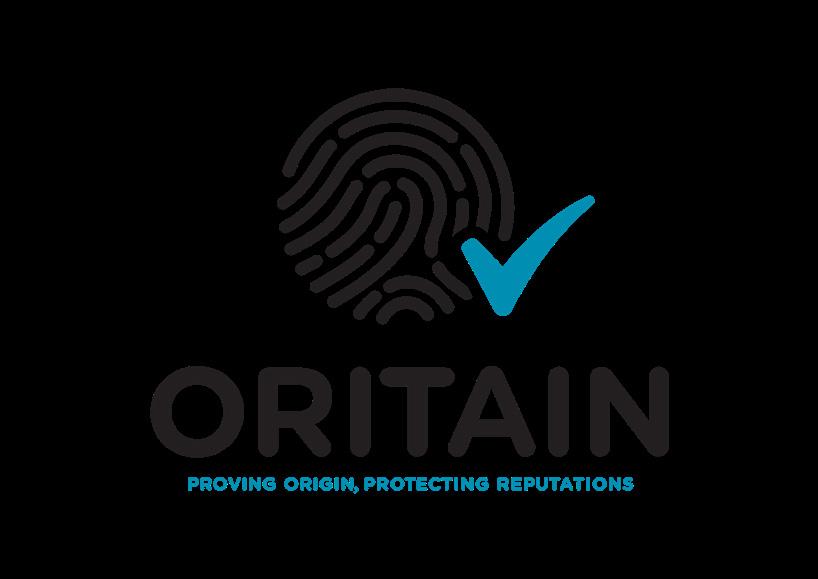The True Cost of Detention
When it comes to getting your goods through U.S. Customs, an ounce of protection is worth a pound of cure.

When it comes to regulatory compliance, ignorance is hardly bliss. ⚫ Not knowing exactly what’s in your textiles or apparel—from where the raw materials were sourced to what type of labor was or wasn’t used along the supply chain—is a costly gamble amid U.S. Customs and Border Protection (CBP) crackdowns. Willful ignorance won’t get seized shipments out of CBP detention, nor will it prevent future Withhold Release Orders (WROs). ⚫ Rising regulations might be drowning apparel and textile supply chains in documentation, but the burden is worth the trouble. CBP detentions not only hurt importers’ bottom lines and damage relationships with suppliers and retailers, but they also increase future government scrutiny. With approximately $468 billion of garment imports in the G20 at risk of modern slavery according to Fashion Revolution’s 2023 Fashion Transparency Index, it pays to be vigilant.
The stringent Uyghur Forced Labor Prevention Act (UFLPA), which went into effect in 2022 in the U.S., receives the lion’s share of corporate attention and compliance dollars. Under the rebuttable presumption, UFLPA requires importers to provide “clear and convincing evidence that the supply chain of the imported product is free of forced labor,” as stated by the Department of Homeland Security, and the level of evidence under the UFLPA is higher than what a standard WRO requires. It's a costly proposition. To date since June 2022, U.S. Customs and Border Protection agents have detained1 1,823 apparel, footwear and textiles shipments (valued at $87.01 million) at the border under suspicion of goods made with forced labor. Of those, 1,074 were denied entry, 228 are pending and 521 were released. Beyond just UFLPA enforcement actions2 in FY 2023, CBP seized more than 5,000 textile shipments valued at more than $129 million, issued approximately $19.3 million in commercial fraud penalties, and conducted audits that identified over $2 million in additional duty owed to CBP. In CBP laboratory analysis on 323 shipments, it found that 42 percent were mis-declared or mis-described when arriving in the United States3
1,823
To date, U.S. Customs and Border Protection agents have detained 1,823 apparel, footwear and textiles shipments at the border under suspicion of goods made with forced labor.
why companies must be extremely proactive with traceability technology to know exactly what’s in their supply chain. Section 307 of the Tariff Act of 1930 has been targeting shipments using forced labor for almost 100 years, with a broad global focus. And more regulations are coming down the pipeline. The EU’s Corporate Sustainability Due Diligence Directive (CSDDD) will

Additionally, importers may likely expect even more detentions if and when the de minimis Section 321 loophole expires—meaning imports valued at less than $800 would no longer be able to bypass Customs without being inspected4
The cotton-heavy fashion industry encompassing apparel, footwear and textiles is second only to electronics when it comes to CBP examinations. This turns up the heat on importers, and underscores
1.
2.
3. cbp.gov
4. nftc.org
come into operation in upcoming years, holding both large EU companies (and non-EU companies that operate in the EU) accountable for environmental and social infractions along their supply chain. Penalties are not definitive, but they can include a maximum of 5 percent of the company's net worldwide turnover in the previous financial year, not to mention “naming and shaming” measures.
MEASURING DETENTION COSTS
Detention has many costs, some measured in dollars, others in less tangible damages.
For the average importer, when a flagged shipment arrives, CBP takes about five days to make a decision on whether they're going to release the shipment, detain the shipment or take some other enforcement action. Once hit with a WRO, importers have 3 months to produce an admissibility document package to the government and get the release process started. Cue the lawyers. For textile detentions, CBP turnaround time usually ranges
between 1 week to 4 months after submitting the package, say insiders, and legal fees can reach up to $60,000 for a single shipment. Costs will vary depending on how many different styles are in the shipment, how many different cotton sources there are for any given fabric in a garment, and how prepared and organized the entities are in the supply chain. Time is money, and document organization and thoroughness will speed up reviews. When looking at direct detention fees, “Costs start at the moment that the shipment has to be inspected,” said Ana Hinojosa, an advisor to Oritain, a global leader in origin
In laboratory analysis on 323 shipments, CBP found that 42 percent were mis-declared or mis-described when arriving in the United States.

verification, and former executive director at CBP with 35 years at the agency. “It’s going to be several thousands of dollars to get that container to a place where it can be opened up, looked at, and then, depending on how long that takes, it could be under the control of the warehouse or the container freight station (CFS).”
If that takes a while, the shipping company starts charging fees for demurrage (failure to load or discharge the ship within the time agreed), ranging from $75 to $300 a day per container for its non-use, plus the costs to the warehouse or CFS.
Once faced with detention, the process of procuring necessary documentation from all vendors can be quite arduous. Oritain cites a previous detention where the importer—over the course of two months— provided over 400 documents for just 4 product styles across 3 supply chains (one of the supply chains had more than 10 tiers). Hassle notwithstanding, time can derail a brand’s ability to sell the merchandise once released.
“If it's going to take you 30, 60 days [to get goods released], in fashion that is a lifetime,” said Hinojosa, noting that seasons or targeted marketing opportunities can be missed completely, especially if importers are filing longer extensions to procure required documents—bill of materials, transportation documents, payment records, ginning and spinning records, knitting and weaving fabric records, cut-and-sew records, etc. 42%
COSTS START AT THE MOMENT THAT THE SHIPMENT HAS TO BE INSPECTED.”
Ana Hinojosa advisor, Oritain, and former executive director, CBP
THE FASHION INDUSTRY ENCOMPASSING APPAREL, FOOTWEAR AND TEXTILES IS SECOND ONLY TO ELECTRONICS WHEN IT COMES TO CBP EXAMINATIONS.


1/3
About
As the importer incurs detention and demurrage costs, they have a few options. They can negotiate to re-export the shipment back to the supplier for a credit, they can repurpose or re-export the shipment to a different market with less stringent regulations (something that will get increasingly tricky as global regulations ramp up), or they can abandon the shipment entirely where it then becomes the government’s responsibility to destroy.
In addition to monetary fees, the process also places emotional, operational and reputational damages on the business.
“A department store that buys things from lots of different brands might not want to buy from a brand that has to convince them [post detention], ‘It’s still safe to purchase from us. We’re not going to buy from this manufacturer anymore,’” said Elise Shibles, partner, advisory committee with legal firm Sandler, Travis & Rosenberg, P.A. “It’s not like the solar world where there are limited manufacturers and suppliers, so the importer will work on a system to get that product cleared. In the textile world, they can just say, ‘I'm sorry, we really like you guys, but we can get this from somebody else without all this expense and delay.’”
Such cut-and-run actions also put undue financial pressures on suppliers, who are often left holding the bag—or dresses, as the case may be.
And while CBP detentions aren’t necessarily made public, rumors do leak out, especially as the world is more focused on how brands are treating forced labor compliance and other ESG issues. Loss of consumer trust can go a long way toward eroding margins and brand reputation, and loss of investment dollars can have detrimental effects.
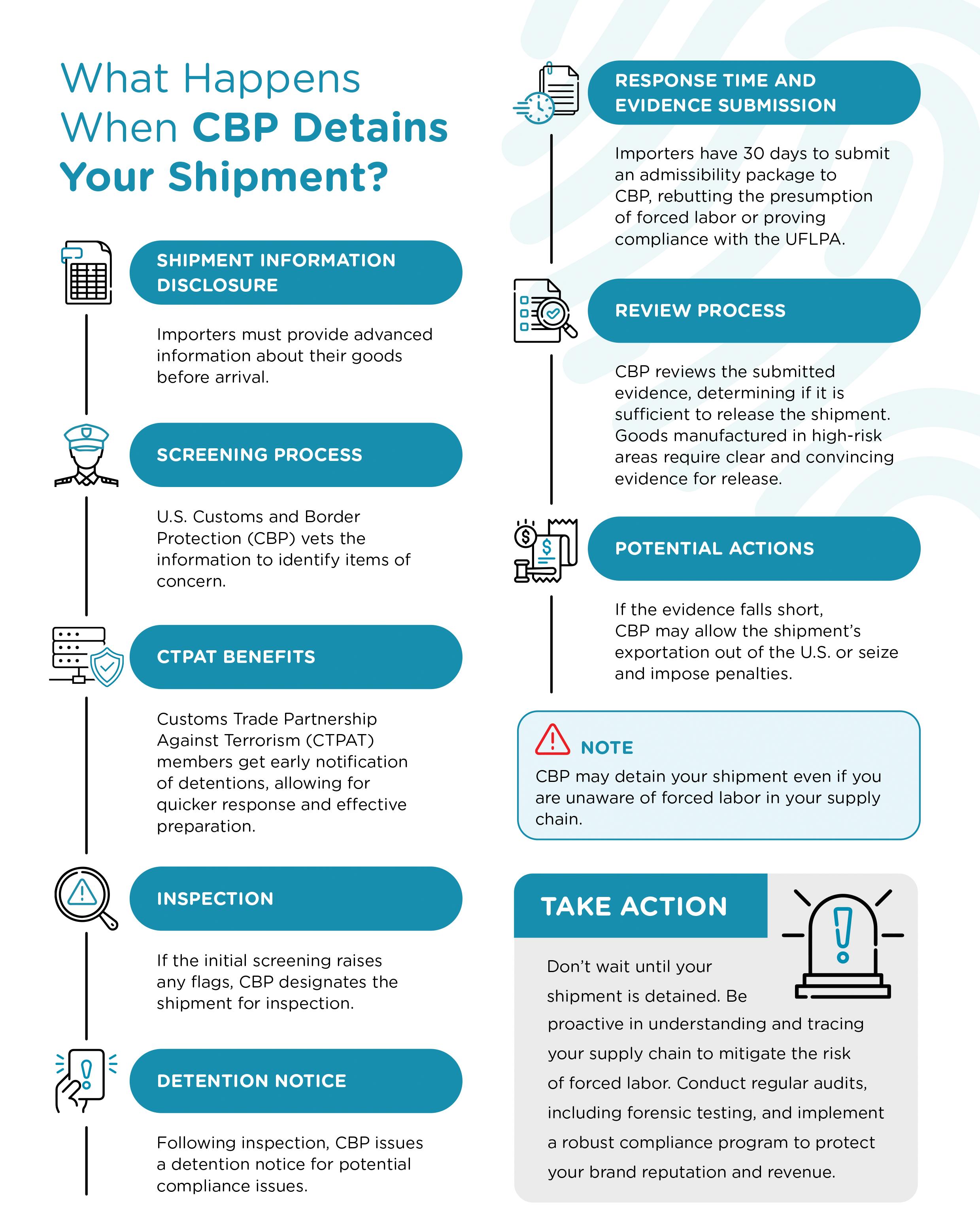
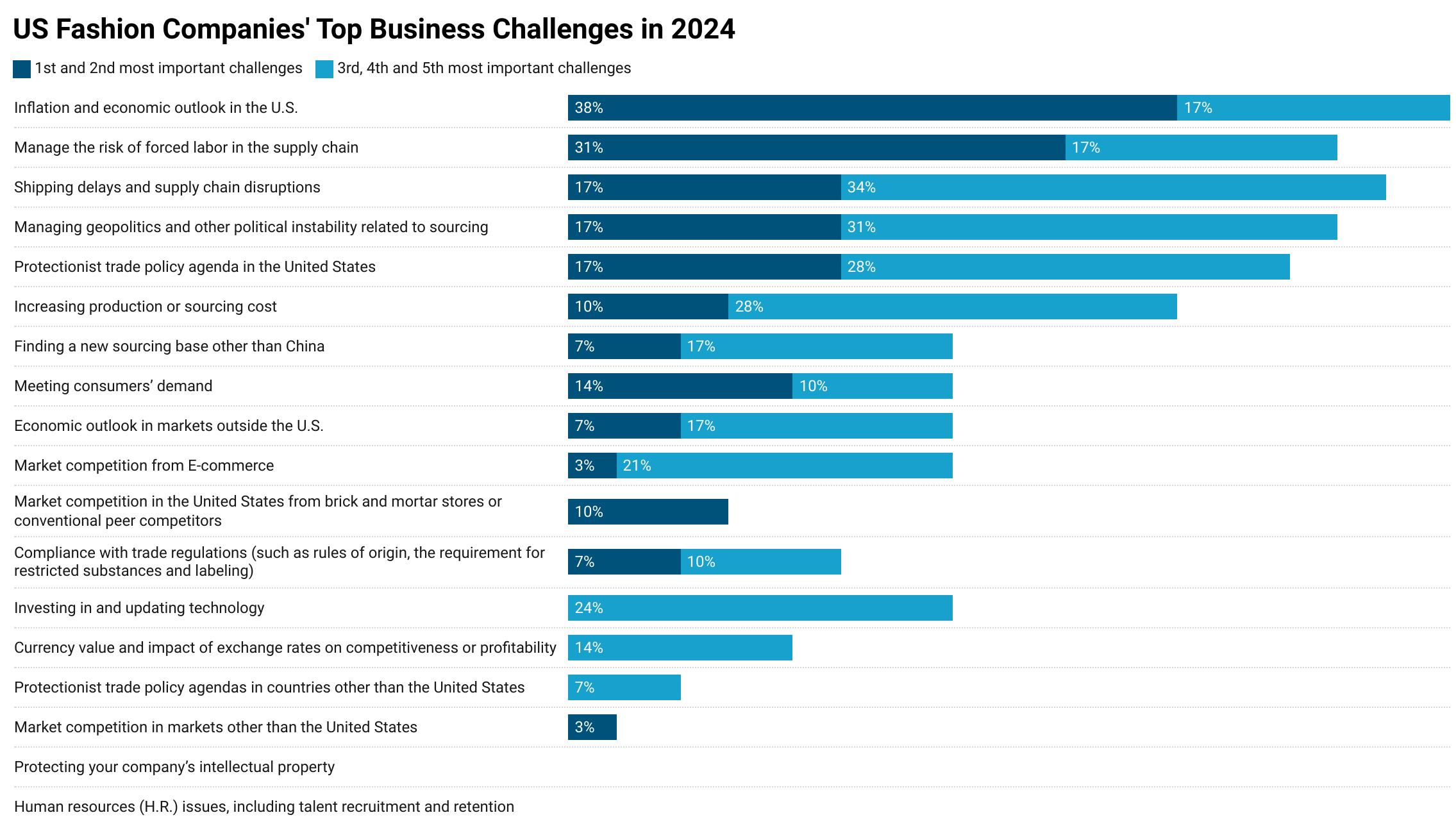
30-60
“If it’s going to take you 30, 60 days [to get goods released], in fashion, that is a lifetime.” Ana Hinojosa, advisor, Oritain
PAINFUL DOCUMENTATION, PAINFUL DETENTIONS
Global supply chain compliance within the textile and apparel industry is also inherently more difficult compared to other industries. With so much complexity due to the high number and variety of SKUs, importers not only work with many different suppliers, but brands constantly shift and find new ones while chasing trends. This makes it harder to build trust levels with suppliers and get supplier buy-in on the urgency of documentation. After all, it’s not necessarily the brands themselves gathering all documentation; it’s the Tier 2 supplier asking their Tier 3 supplier asking their Tier 4 supplier, and so on along the chain.
Compounding detention challenges is the fact that CBP doesn’t
42%
In laboratory analysis on 323 shipments, CBP found that 42 percent were mis-declared or mis-described when arriving in the United States.
tell companies specifically why their goods are detained, or why their documents submission was rejected, nor does it publish detailed “no-go” supplier lists beyond the UFLPA Entity List—a constantly evolving register of entities that are involved in forced labor—that could better steer future partner choices. (As of August 8, 2024, the UFLPA Entity List included 73 entities with 5 more entities added to the list by the DHS. This incomplete list includes over 9 industries, one of which is apparel.)


“We've advocated for more transparency,” said Nate Herman, SVP, policy, American Apparel and Footwear Association (AAFA), who estimates that about a third of its member companies have experienced merchandise detainment. “There's basic U.S. jurisprudence, U.S. due process that under American law and under the Constitution that if you're $75-$300
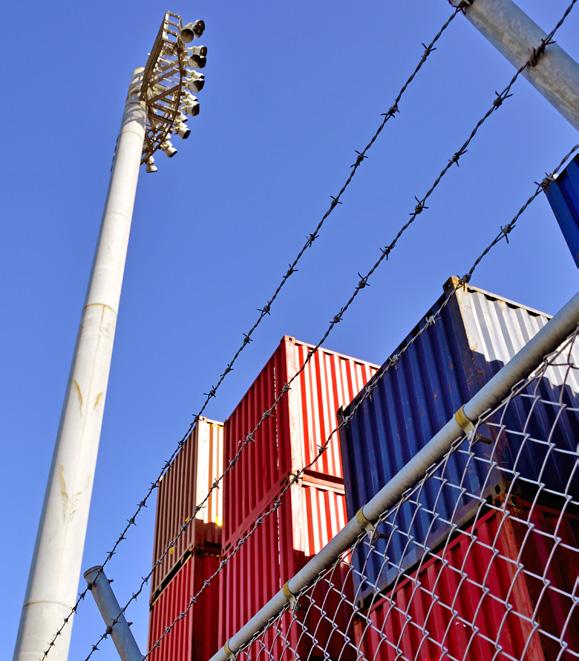
A DETENTION CASE STUDY
WHAT IT REALLY COST ONE IMPORTER WHO HAD GOODS DETAINED.
Various containers were stopped
PROCESS Importer acted as a middleman, relaying information between their legal counsel, the customers’ attorney and the factory that shipped the goods.
REBUTTAL Importer created a comprehensive presentation based on their interpretation of the requirements. As there wasn't enough evidence to prove that the cotton for the goods made was actually legitimate, CBP told importer they didn't have sufficient information and needed to either destroy the goods or export them back out of the country.
COSTS Importer paid initial freight costs and additional storage fees while their products were held up for roughly three months. Total costs were $810,000.
ACTION & OUTCOME
Beyond incurred costs for freight and storage, importer also had to pay the freight back out of the country. To recoup losses, it had to offload products at reduced prices.
$60,000
accused of something, evidence is provided so that you can refute that evidence. In this case, you're not provided [with] that evidence, so you don't know why or what part of your supply chain triggered [it]. So, you're sort of trying to prove a negative because you don't have that information.”
PROACTION VS. REACTION
Obviously, the best strategy against detention is deterrence. Being proactive is key, especially since brands don’t always have direct connections with mills, or even know which mill is making the fabric. Companies must make sure they can track and trace the origin of their products to every single tier along the supply chain—not easy when there’s so much transshipment—and be ready at a moment’s notice to produce the information.
Depending on the size of the company, this can fall to compliance managers, supply chain specialists, purchasing agents or the like. And brands might create contracts stipulating that a manufacturer only source from approved suppliers, approved countries or a certain quality level. The overall job can be daunting.
“If you spoke to any person responsible for that at any of the private sector companies, they would tell you they're overwhelmed,” said Hinojosa.
“The need for automation is huge and the requirements have grown tremendously. They really have to do a yeoman's job just to be able to support that their goods are compliant.”
Liz Hershfield, whose new consultancy Green-ish creates sustainability strategies that support

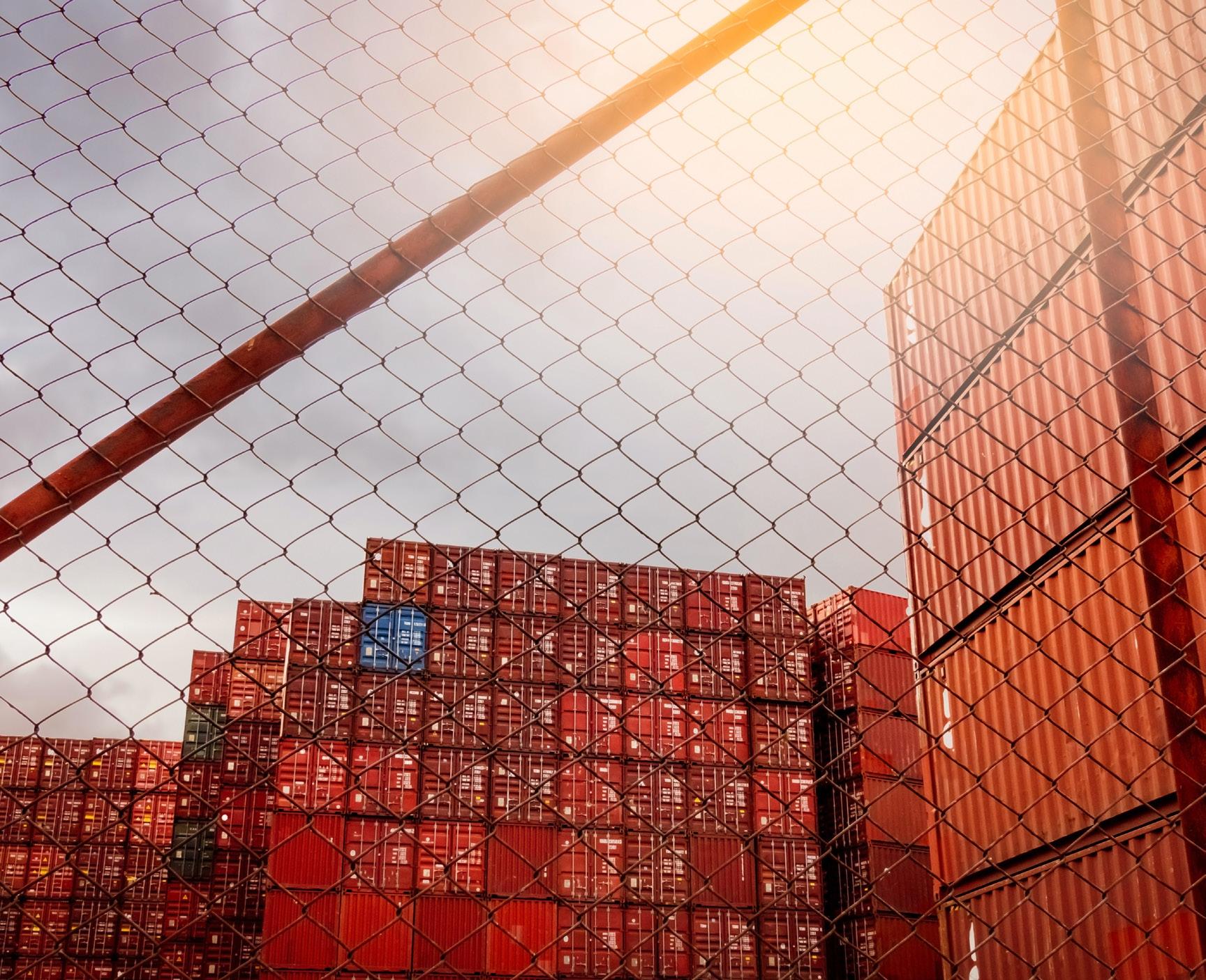
$19.3 M
CBP issued approximately $19.3 million in commercial fraud penalties, and conducted audits that identified over $2 million in additional duty owed to CBP. —2023
business, has used her experience and recent position as senior vice president of sustainability at J.Crew and SVP of sourcing at Madewell to help companies navigate this complicated landscape.
“The ethos of the company has to say, ‘We don't want this in our supply chain,” she said. “Some companies will think, ‘Well if we get goods detained we’ll just walk away from them,’ but at J.Crew, we invested money into the entire traceability and transparency protocol as basically an insurance policy. We figured we’d rather spend the money and have use of our products to sell.”
Despite the best laid plans, goods can still land in detention based on CBP suspicions, so it’s wise for companies to have a contingency plan in place. Richard Mojica, member, practice lead, customs and
Importers should never think detentions won't happen to them.
GLOSSARY
BOM Bill of Materials
CAP Corrective Action Plan
CBP US Customs and Border Protection, Dept of Homeland Security
COO Certificate of Origin
CSDDD EU’s Corporate Sustainability Due Diligence Directive
CSR Corporate
Social Responsibility
CTPAT Customs Trade
Partnership Against Terrorism
FLETF US Forced Labor Enforcement Task Force
GFA Global
Framework Agreements
IFA International
Framework Agreements
NGO Nongovernmental Organization
UFLPA Uyghur Forced Labor Prevention Act
WRO Withhold Release Order
IN THE TEXTILE WORLD, [RETAILERS] CAN JUST SAY,
‘I’M SORRY, WE REALLY LIKE YOU GUYS, BUT WE CAN GET THIS FROM SOMEBODY ELSE WITHOUT ALL THIS EXPENSE AND DELAY.’”
Elise Shibles, partner, advisory committee with legal firm Sandler, Travis & Rosenberg, P.A.
import trade for legal firm Miller & Chevalier (and former attorney with U.S. Customs and Border Protection's Office of Regulations and Rulings), recommends companies conduct trial audit runs to spot—and plug— documentation holes in their supply chains before CBP requires them to produce paperwork on demand during a detainment.
“If you are not set up for this, if you have not conducted what we call mock detentions, or documentation audits, and if your suppliers have not been aware that all this needs to be provided, it is very hard to get all those documents,” said Mojica.
“It is often the case—especially when someone is detained for the first time—that the importer is able to provide maybe first tier, second tier, maybe even third tier documentation, but the paper trail after that is unavailable. At that point, it will be impossible to get goods released.”
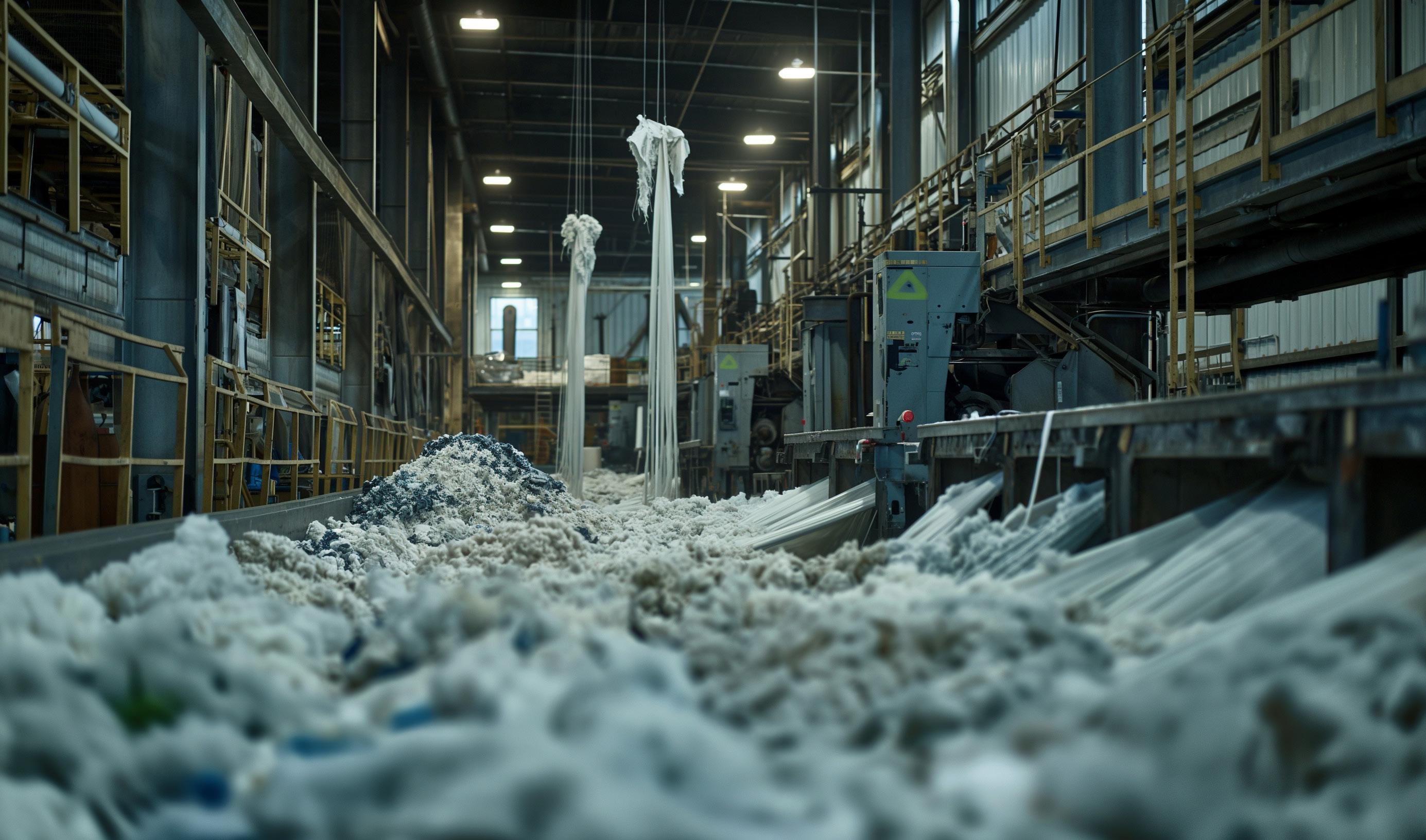

‘TRUST BUT VERIFY’
Companies are catching on to the gravitas of the situation. According to a 2024 United States Fashion Industry Association (USFIA) Benchmarking Survey, 70 percent of respondents said they are increasing resources modestly or substantially toward tracking sustainability and social compliance-related regulation compared with a year ago. Additionally, almost 60 percent are increasing sustainability and social compliance training for suppliers.
However, current mapping tools that many brands use to handle compliance for core processes can fall short, creating a false sense of security that leaves companies susceptible to breach of laws and regulations.
“AI tools use sophisticated algorithms to analyze large volumes of financial data to identify hidden risks such as indirect connections to banned or unethical entities, but despite their effectiveness in financial risk management and entity connections, AI tools don’t address where the raw material is truly coming from at a product level,” noted Dr. Sam Lind, Oritain’s solution architect. “This lack of visibility can leave you vulnerable to supply chain disruptions and potential ethical violations.” Additionally, supply chain mapping tools and blockchain can rely too heavily on self-reported vendor documents.
Pre-screening with Oritain’s forensic isotopic testing, however, can help companies mitigate and prevent detentions by supplementing other documentation. “Oritain is a verification system, so traceability methods rely on information obtained through a chain and then we trace that information back,” he said “Oritain looks to answer the question, ‘What is the source of this raw material?’”
B
70%
Seventy percent of respondents said they are increasing resources toward tracking sustainability and social compliance-related regulation compared with a year ago. —2024 United States Fashion Industry Association (USFIA) Benchmarking Survey
Such isotopic testing offers incremental compliance protection with an objective, verifiable scientific methodology. Importers can use this to confirm what suppliers are putting into their products versus what they say they are. This “trust but verify” course of action on supplier claims is vital, especially as importers are often (but not always) the ones on the hook for detention costs.
Beyond issues of regional forced labor, Oritain, which has the largest cotton reference library in the world, can also detect counterfeits when content pertains to an origin—like Egyptian cotton. “Brands should be aware that by some margin there's always a pressure within these supply chains and so there is incentive to blend and mislabel products. [Brands] should use tools available to them and apply them based on their understanding of how risky those materials could be to counterfeiting,” said Lind.
In 2018, for example, Supima began working with Oritain to authenticate its American-grown Pima cotton fibers using scientific verification to deliver reliable authentication of product origin by testing samples from throughout the supply chain. Oritain collected and analyzed cotton samples from Supima farms in California, Arizona, New Mexico and Texas to develop an Origin Fingerprint for Supima cotton. “Oritain’s verification solution helps protect the reputation of the Supima brand and ensures that its license partners and consumers receive high quality, ethically and sustainably sourced American Pima cotton,” said Lind. ■
This whitepaper was authored by Lauren Parker, Director, SJ and Fairchild Studios

ACTION STRATEGIES
EXPERT TIPS TO PRIORITIZE MITIGATION.
EXPECT THE WORST Companies should never think detentions can’t happen to them or that prevention technology is too costly to implement. “At J.Crew, we invested money into the entire traceability and transparency protocol as basically an insurance policy. We figured we’d rather spend the money and have use of our products to sell.”—Liz Hershfield, Green-ish
GET TRANSPARENCY INTO YOUR SUPPLY CHAIN NOW “If you haven't already started getting transparency into your supply chain, you're too late. You needed to start it last month.” —Ana Hinojosa, Oritain
DON’T RELY SOLELY ON AI AND SUPPLY CHAIN MAPPING TOOLS THAT DON’T REVEAL ORIGIN “AI tools don’t address where the raw material is truly coming from at a product level. This lack of visibility can leave you vulnerable to supply chain disruptions and potential ethical violations.”
—Dr. Sam Lind, Oritain
BE CLEAR WITH PARTNERS UP FRONT Put provisions in contracts on product quality and approved countries and sub-suppliers.
ENGAGE THE CEO Make sure those at the top understand the potential repercussions of detentions.
USE TECHNOLOGY AS A DOCUMENT PRECURSOR Technology can help identify problems with your suppliers so you can get ahead of issues. “The only thing that will get your goods released is documentation.” —Nate Herman, AAFA
PRACTICE MOCK DETENTIONS Are you ready to leap into action if goods are detained? Who is responsible? Do you know where all your documents are?
Oritain is a global leader in forensic verification of product origin, helping brands in fashion and cotton achieve regulatory compliance, mitigate the risk of product fraud, and protect brand reputation by proving the provenance of their products. Fashion brands using Oritain’s isotopic testing have greater assurance around the origin of their cotton products and raw materials, ensuring sourcing processes don’t involve unethical labor practices and enabling compliance with legislation such as the UFLPA. ● By providing science-based verification of origin, Oritain also supports brands in meeting their ESG commitments—ensuring raw materials don’t originate from areas associated with deforestation or other environmental abuses, and providing quantifiable origin data to support measuring operational impact. The unique Oritain methodology combines forensic science and data to analyze environmental factors and create a unique origin fingerprint which can be used to audit products throughout the supply chain to differentiate the legitimate from the fraudulent. The analysis is robust, accurate and highly resistant to being tampered with, replicated or destroyed.
